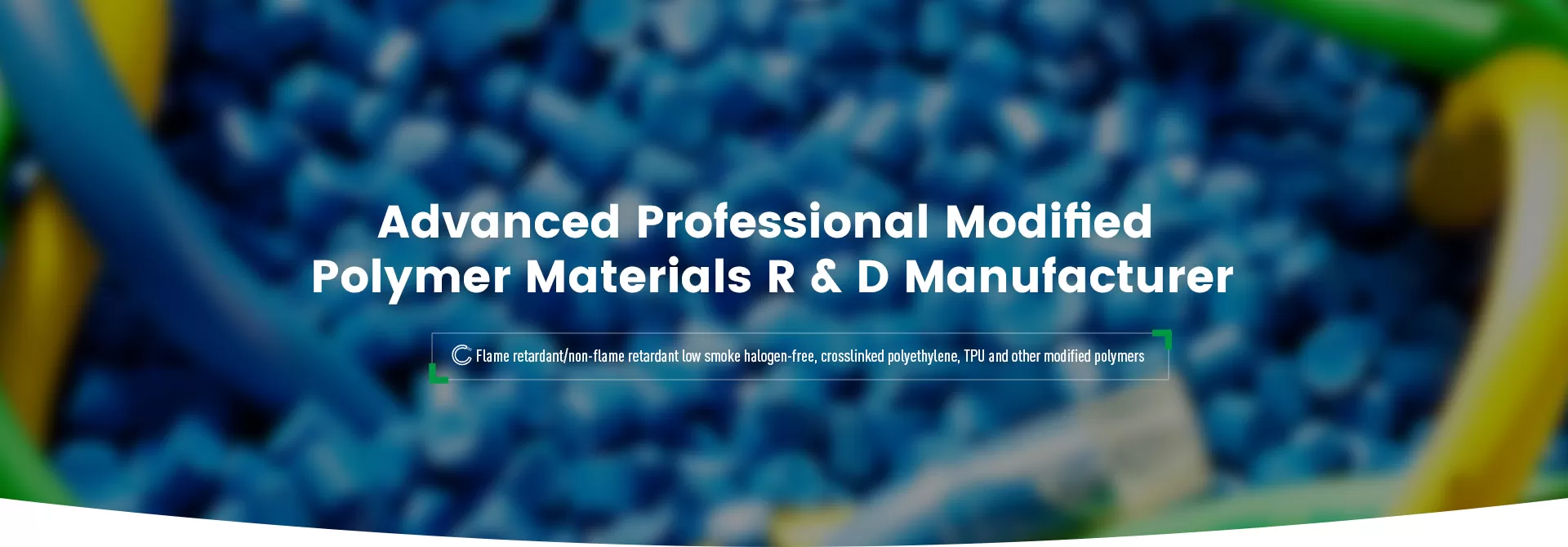
LSZH Compound is a polymer material system that does not contain halogen elements (such as chlorine, bromine, and iodine), and is commonly used in the manufacture of sheath layers and insulation layers of wires and cables. Its main features include extremely low smoke production during combustion, and the released gases are much less toxic to humans and the environment than traditional halogen materials (such as PVC). In addition, LSZH materials do not release corrosive gases after combustion, which significantly reduces the risk of secondary damage to equipment and building structures in fires.
LSZH Compound is usually formulated with polyolefins, flame retardants, inorganic fillers (such as aluminum hydroxide, magnesium hydroxide) and other modified additives, which not only ensures the electrical properties of the material, but also optimizes the flame retardant and mechanical properties.
When a fire occurs, the combustion of traditional PVC cables will produce a large amount of black smoke and toxic and corrosive gases, which can easily cause suffocation of personnel and damage to equipment. Cables made of LSZH compound produce very little smoke during combustion, and the smoke is highly transparent, which helps the rapid evacuation of fire personnel, while significantly reducing the corrosion to electronic systems, communication equipment and steel structures. This performance makes LSZH cables the first choice for places with high safety requirements such as airports, subways, hospitals, and data centers.
Many authoritative standard organizations around the world have listed low-smoke and halogen-free performance as mandatory requirements. For example:
·IEC 60332: Cable fire resistance test standard
·IEC 60754: Halogen gas release and acidity test standard
·IEC 61034: Smoke density measurement standard when cables burn
Using materials that meet LSZH standards can help cable manufacturers and project parties easily pass international certification, improve product competitiveness, and reduce export barriers.
Modern LSZH compound not only performs well in flame retardancy and environmental protection, but also continues to optimize flexibility, tear resistance and mechanical impact resistance.
This brings more freedom to cable design, for example:
·Support installation requirements with smaller bending radius;
·Adapt to high-density wiring environments, such as smart buildings and automated factories;
·Meet the special requirements of complex construction environments such as rail transit and tunnel construction;
At the same time, with the development of material technology, some high-performance LSZH formulations have achieved low-temperature flexibility of -40℃ and long-term operating temperature of up to +125℃, greatly expanding the application field.
Because traditional halogen-containing cables produce a large amount of harmful substances when burning, it not only poses a challenge to fire rescue, but also increases the burden of environmental pollution. LSZH compound complies with environmental regulations such as RoHS and REACH, and is a designated recommended material for green buildings, smart cities and other projects.
The use of LSZH cables can help companies achieve ESG (environment, society and governance) goals and enhance the image of corporate social responsibility.
The reconstruction costs after a fire are often much higher than the initial direct losses. Data center equipment failure, electrical short circuits, and metal corrosion of building structures caused by corrosive gases are all important sources of huge maintenance costs. The use of LSZH compound cables can effectively reduce these invisible losses, greatly shorten the recovery cycle, and reduce overall post-disaster expenses.
Although LSZH compound has obvious advantages in fire safety, there are also some technical challenges, mainly including:
· Processing temperature is sensitive and the processing process window is narrow
· High temperature resistance in high-end applications still needs to be improved
· Compared with traditional materials, the initial material cost is slightly higher
To address these issues, the industry is actively exploring the following directions:
· New nanofiller technology: improve the thermal stability and mechanical strength of materials;
· Modified polymer matrix development: improve the temperature resistance level and achieve a long-term use temperature of 105°C or even higher;
· Halogen-free high-flexibility formula: taking into account environmental protection, safety and high-performance flexibility, adapting to more application scenarios;